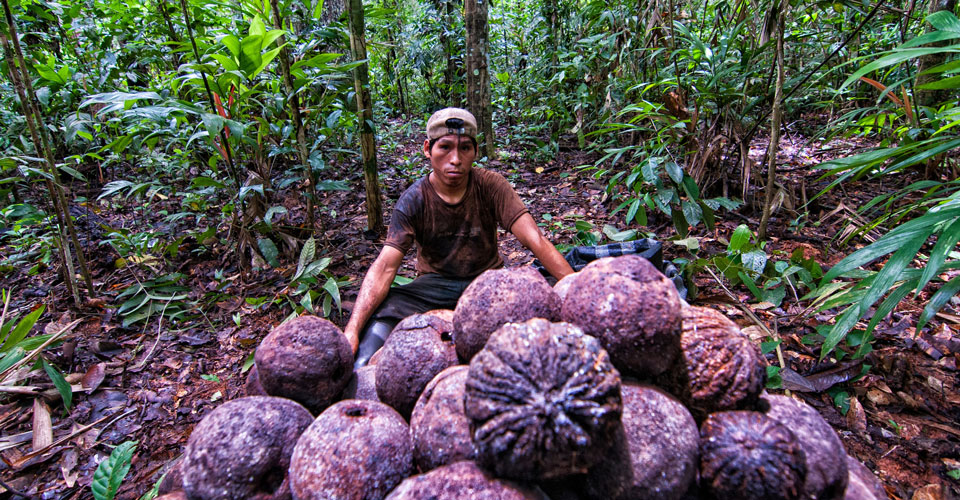Peru:
Embedding a culture of transparency into forest sector management in Peru

Imagine that your government suddenly passed laws that sold off the street where your family had lived for generations to an international property developer. Your land was to be “converted” into flats in the name of national economic development; bulldozers would soon be moving in. You had no say in the process and were promised none of the financial windfall from the sale. Instead, you were to be summarily muscled off your property – end of conversation.
This is the scenario that Hugo Che Piu, head of Peruvian NGO Derecho, Ambiente y Recursos Naturales (DAR), was fighting in 2009. 30 people died during protests near Bagua in the Amazonas region, after laws passed by executive government decree allowed for huge chunks of forest inhabited by indigenous communities to be handed over to international logging firms. The episode was tragic and extreme, but it fitted a pattern of rising tensions that Hugo knew well from his years of defending the rights of communities in Peru’s forests.
In Peru, the state controls all natural resources, and grants concessions and permits for logging. Too often, this means commercial interests and farmers gain control of lands that have belonged to indigenous people for generations. Communities know almost nothing about the deals, while the government’s policies are written in language they cannot understand.
The events in Bagua proved a turning point for Hugo and DAR. He and his colleagues sat down to analyse the causes of the violence and find a solution. The government wanted to increase private investment, while the companies sought favourable terms to establish industrial biofuel plantations in the Amazon. There was no space in the conversation for respecting the rights and the homes of the people that lived on the land. Hugo says “Bagua reaffirmed the need to deepen and improve the mechanisms for participation so that people who depend on forests may see their interests reflected”. So DAR made itself mediator, looking to build the trust of all groups and show that transparency could bring benefits to each of them.
The results have been impressive. Two years on from the violent conflict, lawmakers, indigenous peoples’ representatives and technical experts jointly drafted a new forest law. This was enacted in July 2011 while a new ‘consultation law’ came into force in September 2011. The second of these is key, as it will ensure that the government consults civil society on any new legislation relating to forest use.
DAR have gone on to improve both the demand for, and supply of, information in three of Peru’s most forested regions, taking advantage of newly decentralised powers to promote a culture of forest sector transparency. For example, San Martín regional government’s concern that it lacked the resources for forest inspections, approving management plans and controlling the trade in forest products was typical. It also perceived transparency as a benefit to civil society but not something that would be useful for forest management itself.
DAR changed the authorities’ thinking by working directly with regional government and local NGOs like Amazonians for the Amazon. It supported the cataloguing and digitalising of over 18,000 official documents including management plans, government resolutions, authorisations, permits, concessions and timber transportation licences, and created a website portal for them. The regional authority then assigned an annual budget for continuing the work and updating the portal, with exceptional results. DAR’s annual transparency assessments of the three regional governments saw average compliance with the law rise from 58% in 2010-11 to 88% in 2012 and at its annual national ceremony awarded a prize to San Martín for its 96% score.
Public officials have now seen that forest transparency makes public management more efficient. The San Martín regional government was the first to approve a Regional Forest Plan, and to advance ecological and economic zoning to reduce the pressure on forests from agriculture and logging. Spokesperson Miguel Alva said, "Access to information is very important at country level, now the information will be used to make decisions and intervene immediately. In this regard, we will improve on the dissemination and use other materials to inform the public of what we are doing.”
Ordinary people have also made use of their new access to information and participation in decisions relating to the Transparency Law. Timber traders can now verify that the timber they are buying is legal. Small grants directed at indigenous people and other marginalised stakeholders enable them to learn how to request information under the law, and communicate with the regional authority and the Department for Forests and Wildlife. Journalists and opinion leaders have helped build a campaign for improved public information and participation, which eventually led to government and civil society signing a Forest Transparency Charter in November 2012.
Reflecting on the first five years of DAR’s work on forest sector transparency, Hugo says “This newfound transparency and consultation will not resolve the conflict of interests in Peru’s forests by itself – far from it. But it is a necessary starting point. Meaningful consultation with local civil society, and transparent access to information must be a part of international thinking on forests if we ascribe any value to them outside of corporate balance sheets and net GDP”.
